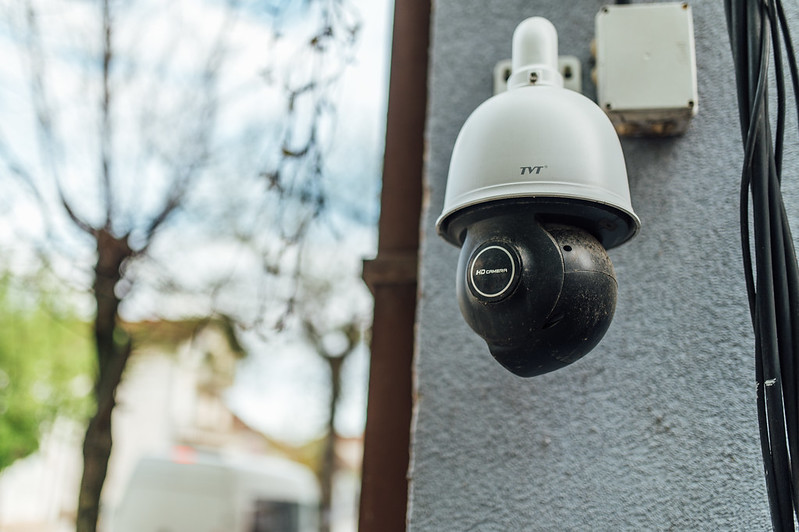Comprehensive Security Solutions: Enhancing Safety and Protection
In an increasingly complex world, the need for robust security measures has never been more critical. From safeguarding homes to protecting sensitive information, comprehensive security solutions play a vital role in ensuring safety and peace of mind. This article explores various aspects of modern security systems, including home security, biometric technology, and alarm systems, to provide insights into how these solutions contribute to enhanced protection.
What are the key components of home security systems?
Home security systems form the foundation of residential protection. These systems typically consist of several interconnected components working together to detect and deter potential threats. Core elements often include:
-
Control Panel: The central hub that manages all system components and communicates with monitoring services.
-
Door and Window Sensors: Devices that detect unauthorized entry attempts.
-
Motion Detectors: Sensors that identify movement within protected areas.
-
Security Cameras: Surveillance equipment for visual monitoring and recording.
-
Alarm Sirens: Loud audio devices to alert occupants and neighbors of potential breaches.
-
Remote Access: Mobile apps or web interfaces allowing users to control and monitor their systems from anywhere.
These components work in tandem to create a comprehensive security network, providing homeowners with real-time alerts and the ability to respond quickly to potential threats.
How do biometric security products enhance protection?
Biometric security products have revolutionized access control and identity verification across various sectors. These systems utilize unique physical characteristics to authenticate individuals, offering a higher level of security compared to traditional methods. Common biometric technologies include:
-
Fingerprint Recognition: Widely used in smartphones, laptops, and access control systems.
-
Facial Recognition: Employed in surveillance systems and high-security facilities.
-
Iris Scanning: Offers extremely high accuracy and is often used in government and military applications.
-
Voice Recognition: Utilized in voice-activated security systems and banking services.
-
Hand Geometry: Measures the shape and size of an individual’s hand for authentication.
Biometric security products provide enhanced protection by eliminating the risk of lost or stolen credentials and reducing the potential for unauthorized access. As these technologies continue to evolve, they are becoming increasingly integrated into both consumer and enterprise security solutions.
What role do security alarms play in comprehensive protection?
Security alarms serve as a crucial deterrent and notification system within a comprehensive security setup. These devices are designed to detect unauthorized entry or suspicious activity and immediately alert property owners, security personnel, or law enforcement. Key features of modern security alarm systems include:
-
Multi-zone Protection: The ability to monitor different areas of a property independently.
-
Silent Alarms: Options for discreet notification to authorities without alerting intruders.
-
Environmental Monitoring: Integration with smoke detectors, carbon monoxide sensors, and flood detectors.
-
Remote Arming/Disarming: Capability to control the system via smartphone apps or key fobs.
-
Backup Power: Battery systems to ensure continued operation during power outages.
-
Professional Monitoring: 24/7 surveillance by trained personnel who can dispatch emergency services if needed.
Security alarms not only provide immediate response capabilities but also serve as a psychological deterrent to potential intruders. The visible presence of alarm systems often discourages criminal activity, contributing to overall safety and peace of mind.
How are comprehensive security solutions integrated for maximum effectiveness?
To achieve optimal protection, comprehensive security solutions often integrate various technologies and services into a cohesive system. This integration allows for more efficient monitoring, faster response times, and improved overall security. Key aspects of integrated security solutions include:
-
Centralized Management: A single platform to control and monitor all security components.
-
Automated Responses: Preprogrammed actions triggered by specific events or alerts.
-
Data Analytics: Advanced algorithms to identify patterns and potential threats.
-
Cloud Integration: Remote storage and access to security data and controls.
-
Artificial Intelligence: Machine learning capabilities to enhance threat detection and reduce false alarms.
-
Interoperability: Seamless communication between different security devices and systems.
By combining home security systems, biometric access control, and advanced alarm technologies, property owners and organizations can create a multi-layered defense against various threats. This integrated approach ensures that vulnerabilities are minimized and response times are optimized.
What are the current trends in security technology and services?
The security industry is constantly evolving, driven by technological advancements and changing threat landscapes. Current trends in security technology and services include:
-
Smart Home Integration: Security systems that work seamlessly with other connected home devices.
-
Artificial Intelligence and Machine Learning: Enhanced threat detection and predictive analysis capabilities.
-
Cloud-Based Security Solutions: Increased adoption of cloud storage and management platforms.
-
Mobile-First Approach: Greater emphasis on smartphone apps for system control and monitoring.
-
IoT Security: Developing solutions to protect the growing number of Internet of Things devices.
-
Cybersecurity Integration: Merging physical and digital security measures to address hybrid threats.
As these trends continue to shape the industry, security solutions are becoming more sophisticated, user-friendly, and adaptable to diverse environments and needs.
In conclusion, comprehensive security solutions encompass a wide range of technologies and services designed to enhance safety and protection. From home security systems and biometric products to advanced alarms and integrated platforms, these solutions provide layered defenses against various threats. As technology continues to advance, the security industry will likely see further innovations, offering even more robust and efficient ways to safeguard people, property, and information.





